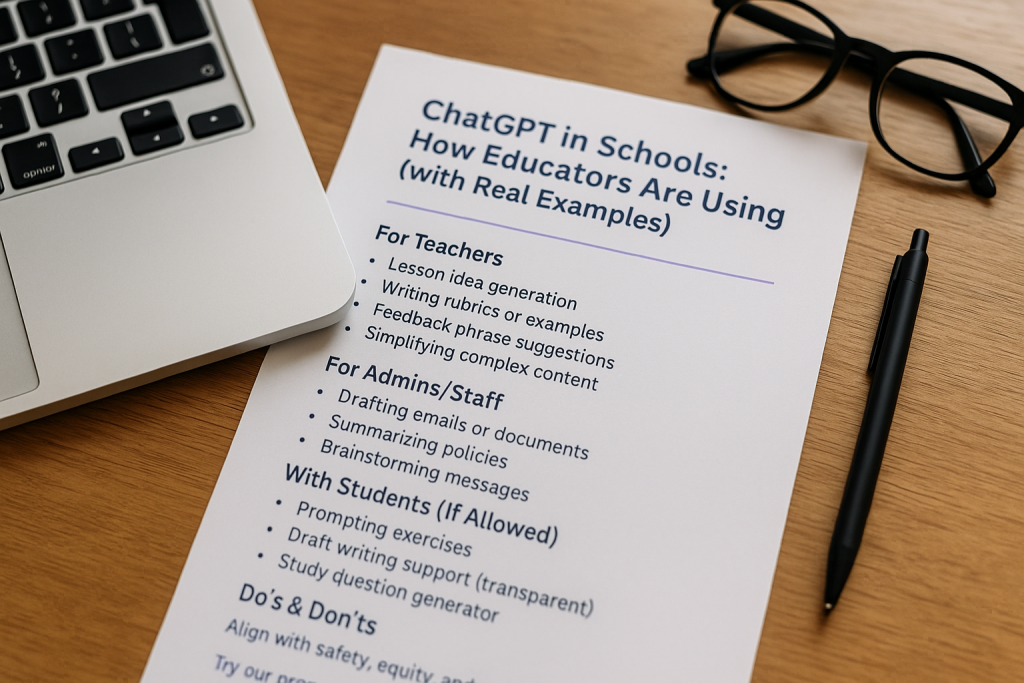
AI isn’t the future — it’s the present. And for California schools, tools like ChatGPT can offer real benefits when used thoughtfully.
This guide offers practical, role-specific examples of how educators, staff, and even students (when appropriate) are using generative AI safely, ethically, and productively.
Use it as a conversation starter, PD-day handout, or companion to your AI use policy.
🧑🏫 How Teachers Are Using ChatGPT
✔️ Lesson Planning
“Give me a week-long 6th grade science unit on energy transfer with objectives, materials, and differentiated activities.”
✔️ Rubric & Prompt Creation
“Create a writing prompt and rubric for a middle school opinion essay on climate change.”
✔️ Feedback Support
“Rewrite this comment to be more encouraging but still constructive: ‘You didn’t meet the assignment requirements.’”
✔️ Accessibility & Simplification
“Reword this high school biology reading to be understandable at a 5th grade level.”
🏫 How Admin & Staff Use ChatGPT
✔️ Drafting Emails or Memos
“Write a parent letter explaining a campus-wide internet outage in calm, clear language.”
✔️ Summarizing Policy Documents
“Summarize this 8-page FERPA guidance memo in 3 bullet points for school board presentation.”
✔️ Brainstorming Campaign Ideas
“Give me 5 creative names for a district-wide digital citizenship month.”
👩🎓 When Students Use AI (If Allowed)
✔️ Prompting Practice
“Ask ChatGPT a history question, then fact-check it with your textbook.”
✔️ Draft Support (with Transparency)
“Write your first draft, then try a ChatGPT version — compare and revise your own writing using insights.”
✔️ Study Help & Clarification
“Explain the difference between similes and metaphors with three new examples.”
Note: Student use should always follow your district’s AI Use Policy and include instructor transparency. ChatGPT shouldn’t replace thinking — it should support it.
❌ What Not to Do
- Don’t copy/paste student data into ChatGPT (FERPA risk!)
- Don’t use AI to replace professional judgment or grading
- Don’t assign AI use unless your district’s policy allows it
- Don’t assume output is correct — always verify facts
💬 Try These Ready-to-Go Prompts
- “Brainstorm 10 spirit week themes that work for elementary students.”
- “Rewrite this 3rd grade behavior report in language parents will understand.”
- “Create a one-paragraph introduction to an 8th grade essay on ocean pollution.”
- “Explain why water freezes at 0°C in kid-friendly terms.”
💡 Final Word
ChatGPT isn’t a replacement for educators — it’s a tool that can save time, spark ideas, and improve clarity.
Used responsibly, it helps teachers teach better, staff work smarter, and students engage more deeply.
Cybersecure California is here to help your school use AI safely, confidently, and creatively.
Pair this guide with your AI use policy — and empower your team with smart, secure innovation.

